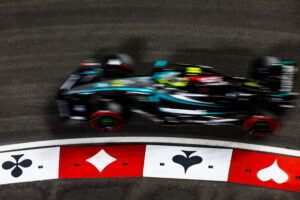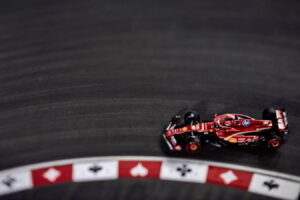The Formula 1 2017 season is less than a week away with the season-opening Australian Grand Prix at Albert Park, Melbourne (24–26th March 2017). The 20 race season promises to be riveting in more ways than one. The fourth season of the not universally loved 1.6 litre V6 turbo-charged hybrid engines begins. In 2017, we will see new engines with more horsepower and the scrapping of the token system for engine development.
A New Era Begins: Preview of the 2017 F1 season – Part 1
Formula 1 in the new season will see a range of changes to the rules and regulations governing the sport. The top management of the sport has also changed with Liberty Media completing their acquisition of the sport during the off-season. Chase Carey has taken over as the new Chief Executive Officer (CEO) and brought an end to the reign of Bernie Ecclestone. Ecclestone was the unchallenged supremo of the sport who had controlled it for 40 years. But it was time for the sport to move on and reshape itself according to the demands of the 21st century. To the delight of fans, the much respected and experienced Ross Brawn has come out of retirement and taken over as the Managing Director of F1. Some sweeping changes can be expected in the sport in the seasons to come.
The significant rule changes has led to aggressive-looking F1 cars which are expected to be three to five seconds a lap faster than last season. The cars are faster because of the increased downforce due to aerodynamic changes, along with the extra mechanical grip provided by the wider tyres.
In more ways than one, the new season promises to be exciting and the start of a new era. In Part 1, we take a look at the technical and sporting regulation changes for the season. We also look at the new developments and innovations on the 2017 F1 challengers based on these regulation changes.
Technical Regulation Changes
Car Dimension Changes
- F1 cars of 2017 are heavier (722 Kg from the old 702 Kg) to account for the larger dimensions.
- Front Wings are wider increasing from 1650 mm wide to 1800 mm and hence the car width is now wider going from 1800 mm to 2000 mm.
- The sidepods and floor width has now increased to 1600 mm
- The diffuser starts 175 mm ahead of the rear axle and is now wider in dimension (1050 x 175 mm). This increased diffuser size helps increase downforce at the rear.
- The overall height of the rear wing has decreased from 950 mm to 800 mm and the width has increased from 750 mm to 950 mm. This change will hopefully allow cars to follow each other more closely without loss of downforce and can help in improving overtaking.
- The sharkfins have returned on the engine covers and will play a part in improving the aerodynamic flow.
- Even as the dimensions of the car have been changed, the exclusion area has been decreased allowing aerodynamicists greater freedom.
Tyre Dimension Changes
- The tyre width has increased by 25% and the diameter has increased by 10 mm to improve mechanical grip.
- The front tyre width has increased from 245 mm to 305 mm, while the rear tyre width has increased from 325 mm to 405 mm.
- Pirelli will bring the same tyre compoundss as last year – Ultrasoft, Supersoft, Soft, Medium, Hard, Intermediate and Wet tyres. But the rubber compounds used to make the tyres are harder, with a new construction that will make the tyres more durable.
- The less fragile tyres are needed with the increased torque and downforce the cars will now have.
Engine Changes
- There are new weight and material restrictions on the engine parts, but the token system has been scrapped and the engine manufacturers can develop the car without any restrictions in-season.
- Only four engines per driver can be used without penalties as there are only 20 races this season. If there are more than 20 races, five engines per driver are allowed, as was done in the 21 race 2016 season.
- The loophole that allowed drivers to take on more than one engine at a race, thus accumulating all the penalties in one race and building their engine pool has been closed.
- Cars are now allowed 105 kg of fuel, an increase of five percent from the 100 Kg allowed last season. But there are restrictions on the fuel blends that can be used in 2017.
Sporting Regulation Changes
- It would not be an exaggeration to say one of the big factors in Nico Rosberg winning the drivers’ title was the problems his rival Lewis Hamilton had with starts to races with the Mercedes clutch and starting procedures. In 2017, the starting procedures have been further tightened to inject an element of unpredictability into the racing.
- Engineers were allowed to map the clutch settings so that most of the available movement of the paddle could be within the optimum bite point of the clutch. There must now be linear control of the torque during clutch engagement. With the new linear settings, it is up to the driver to find the bite point of the clutch to make the start without getting excessive wheel spin and bogging down, unassisted by his engineers on the pit wall.
- There will be no more starts from behind the Safety Car (SC) in wet weather conditions. When the track is deemed fit enough to race in wet weather conditions, the SC will come in and the cars will assemble on the grid and will have a standing start in wet conditions. Given the dampness on the track and the cold tyres in those conditions, these standing starts could create havoc.
Technical Innovations
The new aerodynamic rules have brought forth many innovations in the new F1 2017 cars:
- The larger diffusers this year have been exploited by Mercedes with a detailed design with turning vanes to increase rear downforce.
- T-wings and in the case of Mercedes a double T-wing mounted on the rear of the shark fin engine covers to improve the airflow from the sidepods into the rear-end of the car.
- Sidepod design again plays an important role in directing the airflow around the car. The Ferrari SF70H has the most detailed and innovative design with turning vanes and widgets in the leading edge of the sidepods and the bargeboards.
- Varied nose designs with the Red Bull RB13 sporting a duct which is allowed for driver cooling under the regulations.
- An innovative cooling system from Ferrari, with pipes running underneath and above the floor creating a smaller cooling unit with better cooling
Technical Controversies:
- A loophole in the new rules that has brought back the shark fin engine covers and the T-wings mounted on it, clearly spoil the aesthetics of the new cars. Both Ross Brawn and Christian Horner have spoken about rule changes to get rid of the shark fin covers.
- The new suspension systems have already created a controversy. Ever since the FRIC (Front-to-Rear-Inter Connected Suspension) was banned, teams have tried to find innovative ways to get the same performance gains with other designs. Ferrari had asked the FIA for clarification about what is allowed under the new rules. FIA has warned the teams (Mercedes and Red Bull) not to use trick suspension designs to assist aerodynamic performance.
- Teams have objected to the Renault RS27 rear-wing support pillars and the FIA has asked Renault to redesign their rear wing before the Australian GP to comply with the rules.
Development Race
The top teams have an edge over the other teams in this aspect. They have the resources to continue the development and bring new updates to the car until the very last race of the season. With so many regulation changes, the teams will be studying the innovative designs of other teams and spending a lot of money to clone the better design concepts. The Ferrari sidepod design for example will be closely studied for its performance gains by other teams. This could see other teams emulate the innovative design. The suspension designs, even as the FIA clamps down, will be a focus area.
The 2017 F1 cars could potentially be the fastest F1 cars ever. The season could catch fire, if teams can challenge the three year dominance of the Mercedes team. Close racing and nail-biting title challenges in these aggressive and superb looking new cars could be the beginning of a new era in Formula 1.
Main Photo






